
Newspaper and digital media company The New York Times (NYSE:NYT) reported Q2 CY2025 results exceeding the market’s revenue expectations, with sales up 9.7% year on year to $685.9 million. Its non-GAAP profit of $0.58 per share was 12.7% above analysts’ consensus estimates.
Is now the time to buy The New York Times? Find out by accessing our full research report, it’s free.
The New York Times (NYT) Q2 CY2025 Highlights:
- Revenue: $685.9 million vs analyst estimates of $670.3 million (9.7% year-on-year growth, 2.3% beat)
- Adjusted EPS: $0.58 vs analyst estimates of $0.51 (12.7% beat)
- Adjusted EBITDA: $127.9 million vs analyst estimates of $120.7 million (18.7% margin, 6% beat)
- Operating Margin: 15.5%, up from 12.7% in the same quarter last year
- Free Cash Flow Margin: 17.6%, up from 11.6% in the same quarter last year
- Subscribers: 11.3 million, up 460,000 year on year
- Market Capitalization: $8.74 billion
Company Overview
Founded in 1851, The New York Times (NYSE:NYT) is an American media organization known for its influential newspaper and expansive digital journalism platforms.
Revenue Growth
A company’s long-term sales performance is one signal of its overall quality. Any business can put up a good quarter or two, but many enduring ones grow for years. Regrettably, The New York Times’s sales grew at a sluggish 8.5% compounded annual growth rate over the last five years. This was below our standard for the consumer discretionary sector and is a rough starting point for our analysis.
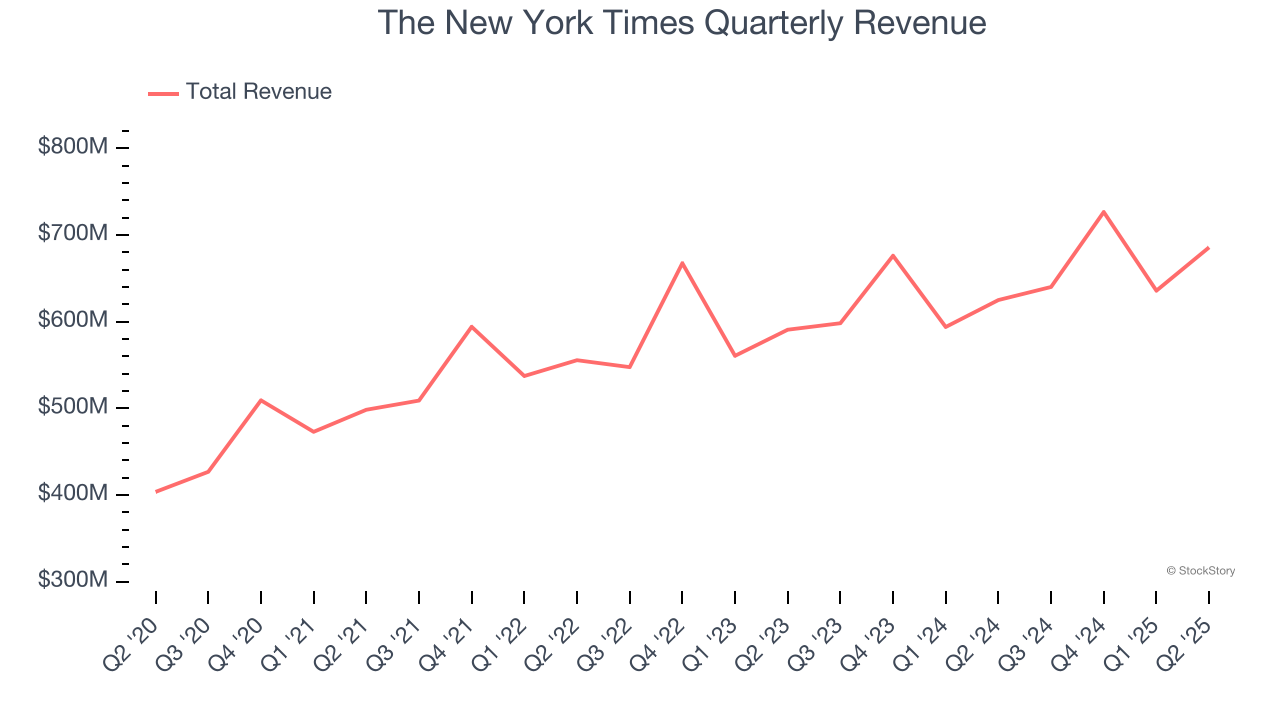
We at StockStory place the most emphasis on long-term growth, but within consumer discretionary, a stretched historical view may miss a company riding a successful new product or trend. The New York Times’s recent performance shows its demand has slowed as its annualized revenue growth of 6.6% over the last two years was below its five-year trend. 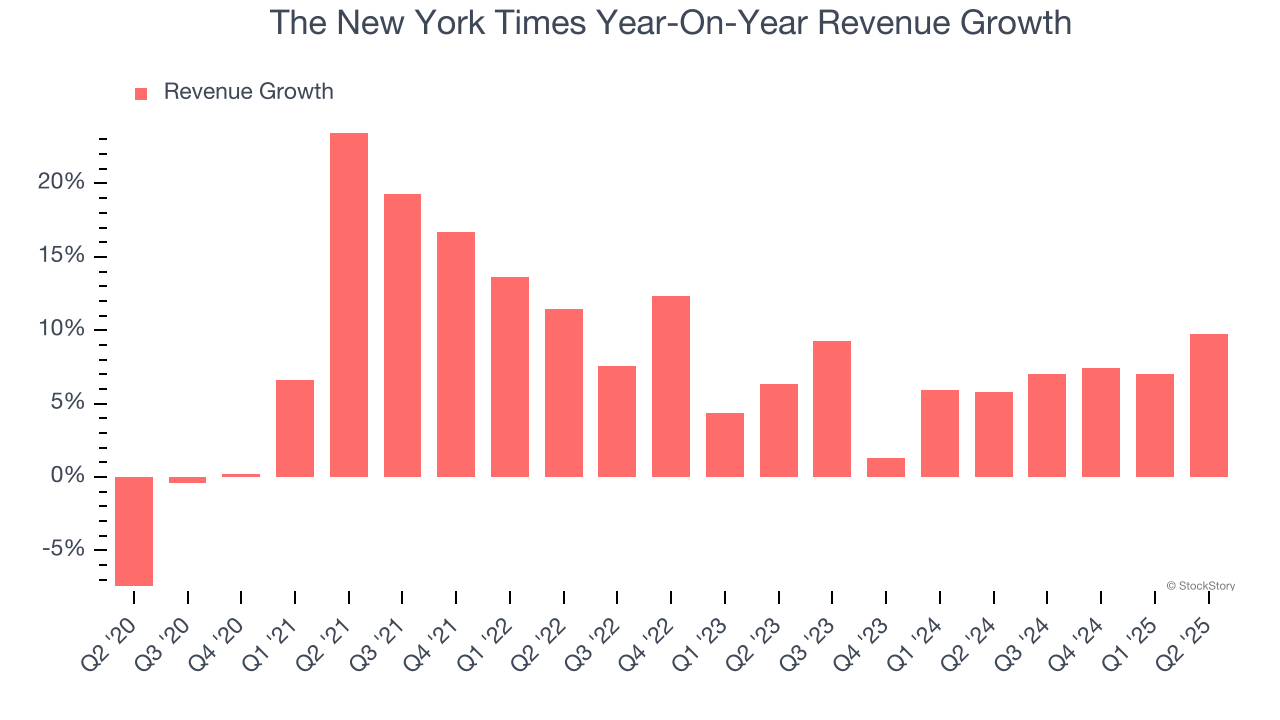
The New York Times also discloses its number of subscribers, which reached 11.3 million in the latest quarter. Over the last two years, The New York Times’s subscribers averaged 8.7% year-on-year growth. Because this number is higher than its revenue growth during the same period, we can see the company’s monetization has fallen. 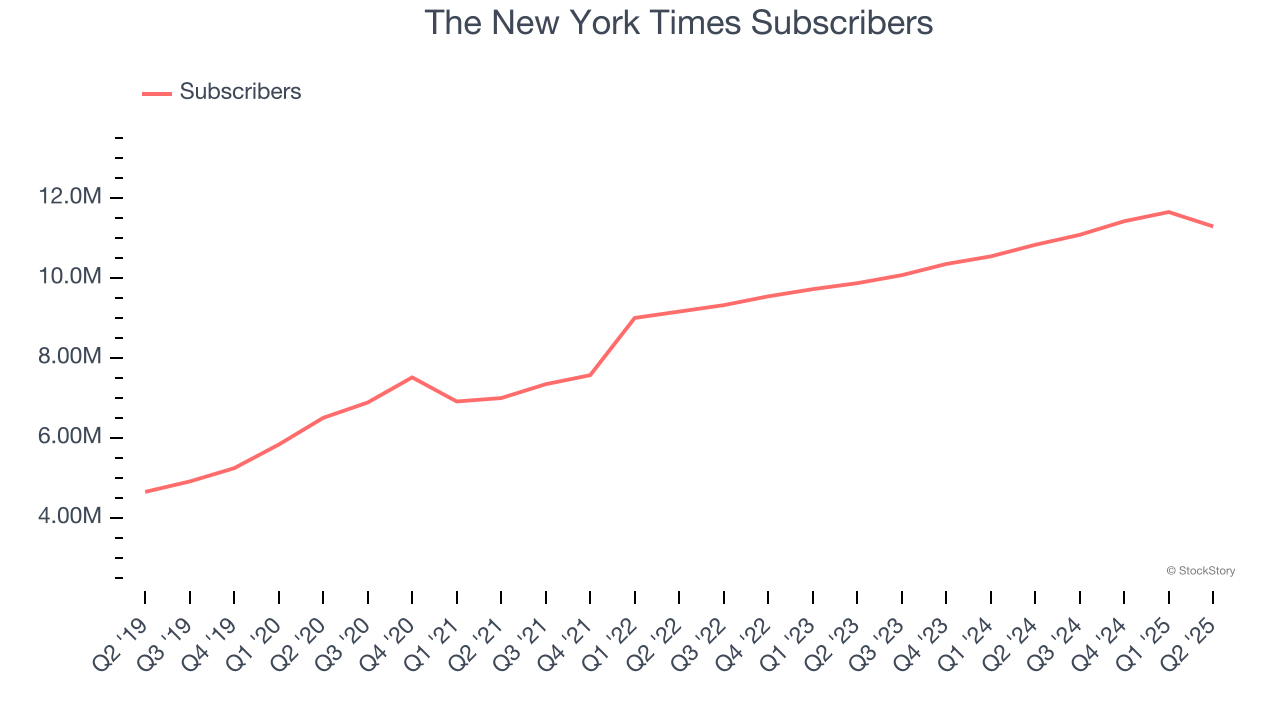
This quarter, The New York Times reported year-on-year revenue growth of 9.7%, and its $685.9 million of revenue exceeded Wall Street’s estimates by 2.3%.
Looking ahead, sell-side analysts expect revenue to grow 5.7% over the next 12 months, similar to its two-year rate. This projection doesn't excite us and suggests its newer products and services will not lead to better top-line performance yet.
Today’s young investors won’t have read the timeless lessons in Gorilla Game: Picking Winners In High Technology because it was written more than 20 years ago when Microsoft and Apple were first establishing their supremacy. But if we apply the same principles, then enterprise software stocks leveraging their own generative AI capabilities may well be the Gorillas of the future. So, in that spirit, we are excited to present our Special Free Report on a profitable, fast-growing enterprise software stock that is already riding the automation wave and looking to catch the generative AI next.
Operating Margin
Operating margin is an important measure of profitability as it shows the portion of revenue left after accounting for all core expenses – everything from the cost of goods sold to advertising and wages. It’s also useful for comparing profitability across companies with different levels of debt and tax rates because it excludes interest and taxes.
The New York Times’s operating margin has been trending up over the last 12 months and averaged 13.7% over the last two years. Its solid profitability for a consumer discretionary business shows it’s an efficient company that manages its expenses effectively.
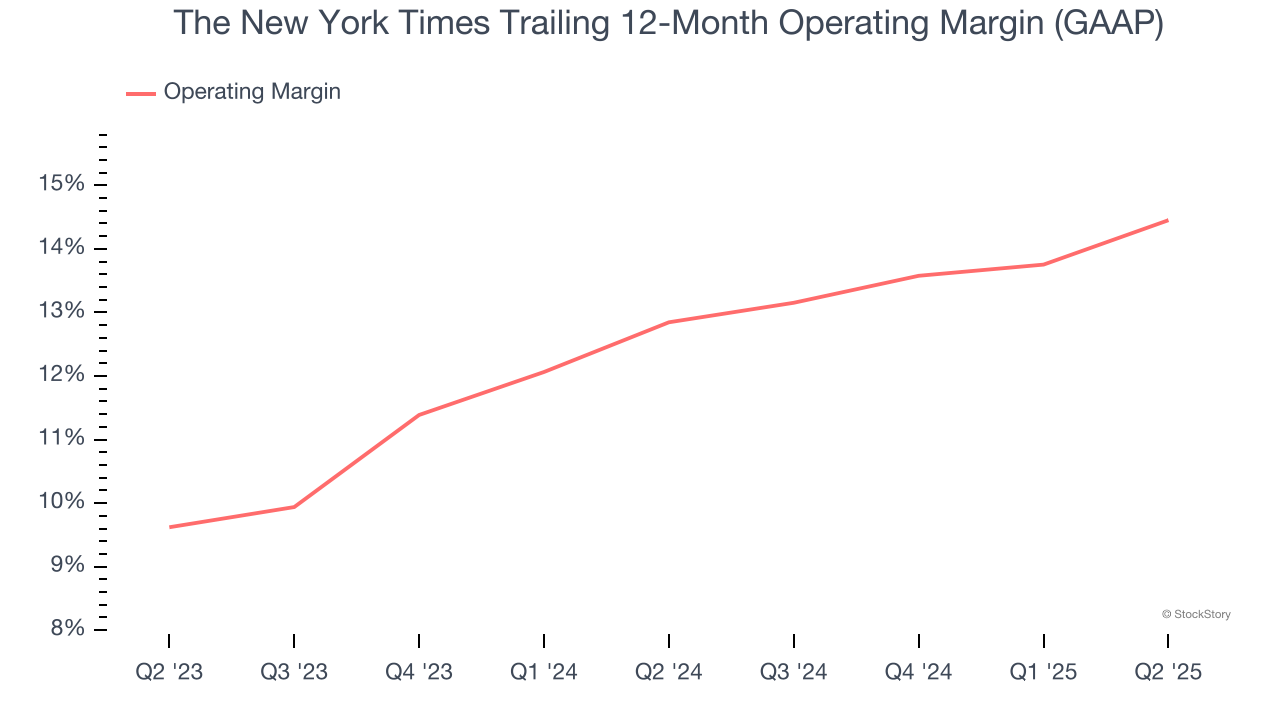
This quarter, The New York Times generated an operating margin profit margin of 15.5%, up 2.8 percentage points year on year. This increase was a welcome development and shows it was more efficient.
Earnings Per Share
We track the long-term change in earnings per share (EPS) for the same reason as long-term revenue growth. Compared to revenue, however, EPS highlights whether a company’s growth is profitable.
The New York Times’s EPS grew at a remarkable 20% compounded annual growth rate over the last five years, higher than its 8.5% annualized revenue growth. This tells us the company became more profitable on a per-share basis as it expanded.
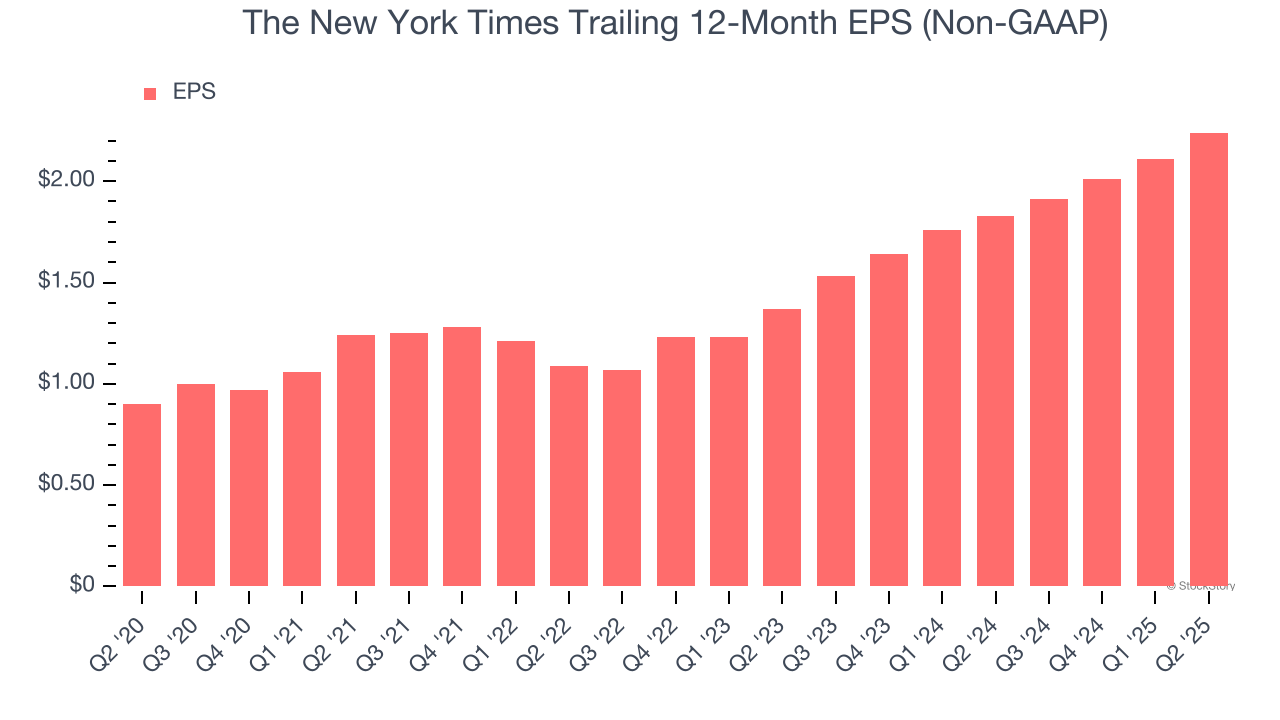
In Q2, The New York Times reported adjusted EPS at $0.58, up from $0.45 in the same quarter last year. This print easily cleared analysts’ estimates, and shareholders should be content with the results. Over the next 12 months, Wall Street expects The New York Times’s full-year EPS of $2.24 to stay about the same.
Key Takeaways from The New York Times’s Q2 Results
It was encouraging to see The New York Times beat analysts’ EPS and EBITDA expectations this quarter. We were also happy its revenue outperformed Wall Street’s estimates. On the other hand, its number of subscribers missed. Overall, we think this was a solid quarter with some key areas of upside. The stock traded up 4.6% to $56.10 immediately after reporting.
Sure, The New York Times had a solid quarter, but if we look at the bigger picture, is this stock a buy? If you’re making that decision, you should consider the bigger picture of valuation, business qualities, as well as the latest earnings. We cover that in our actionable full research report which you can read here, it’s free.
